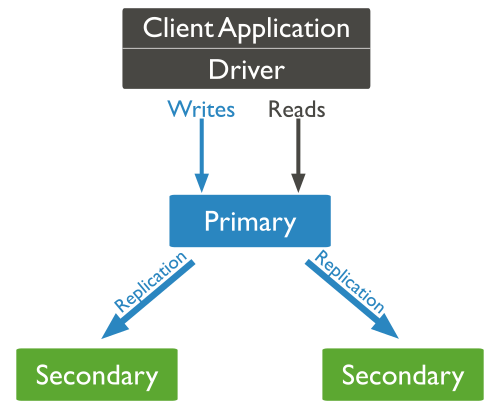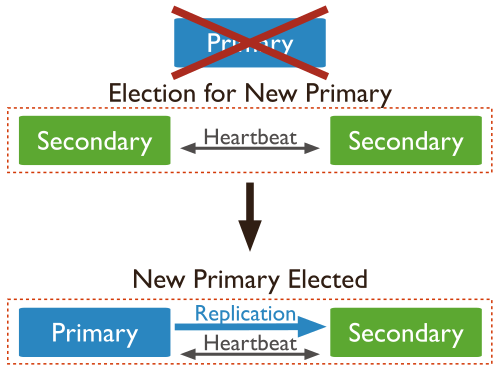- Replication >
- Replication Concepts >
- Replica Set Members >
- Replica Set Primary
Replica Set Primary¶
The primary is the only member in the replica set that receives write operations. MongoDB applies write operations on the primary and then records the operations on the primary’s oplog. Secondary members replicate this log and apply the operations to their data sets.
In the following three-member replica set, the primary accepts all write operations. Then the secondaries replicate the oplog to apply to their data sets.

All members of the replica set can accept read operations. However, by default, an application directs its read operations to the primary member. See Read Preference for details on changing the default read behavior.
The replica set can have at most one primary. [1] If the current primary becomes unavailable, an election determines the new primary. See Replica Set Elections for more details.
In the following 3-member replica set, the primary becomes unavailable. This triggers an election which selects one of the remaining secondaries as the new primary.

| [1] | In some circumstances, two nodes in a replica set may transiently
believe that they are the primary, but at most, one of them will be
able to complete writes with {w: majority} write concern.
The node that can complete {w: majority} writes is the
current primary, and the other node is a former primary that has not
yet recognized its demotion, typically due to a network
partition. When this occurs, clients that connect to the former
primary may observe stale data despite having requested read preference
primary. |